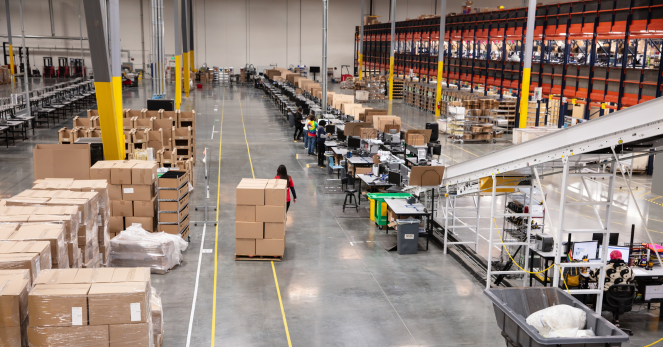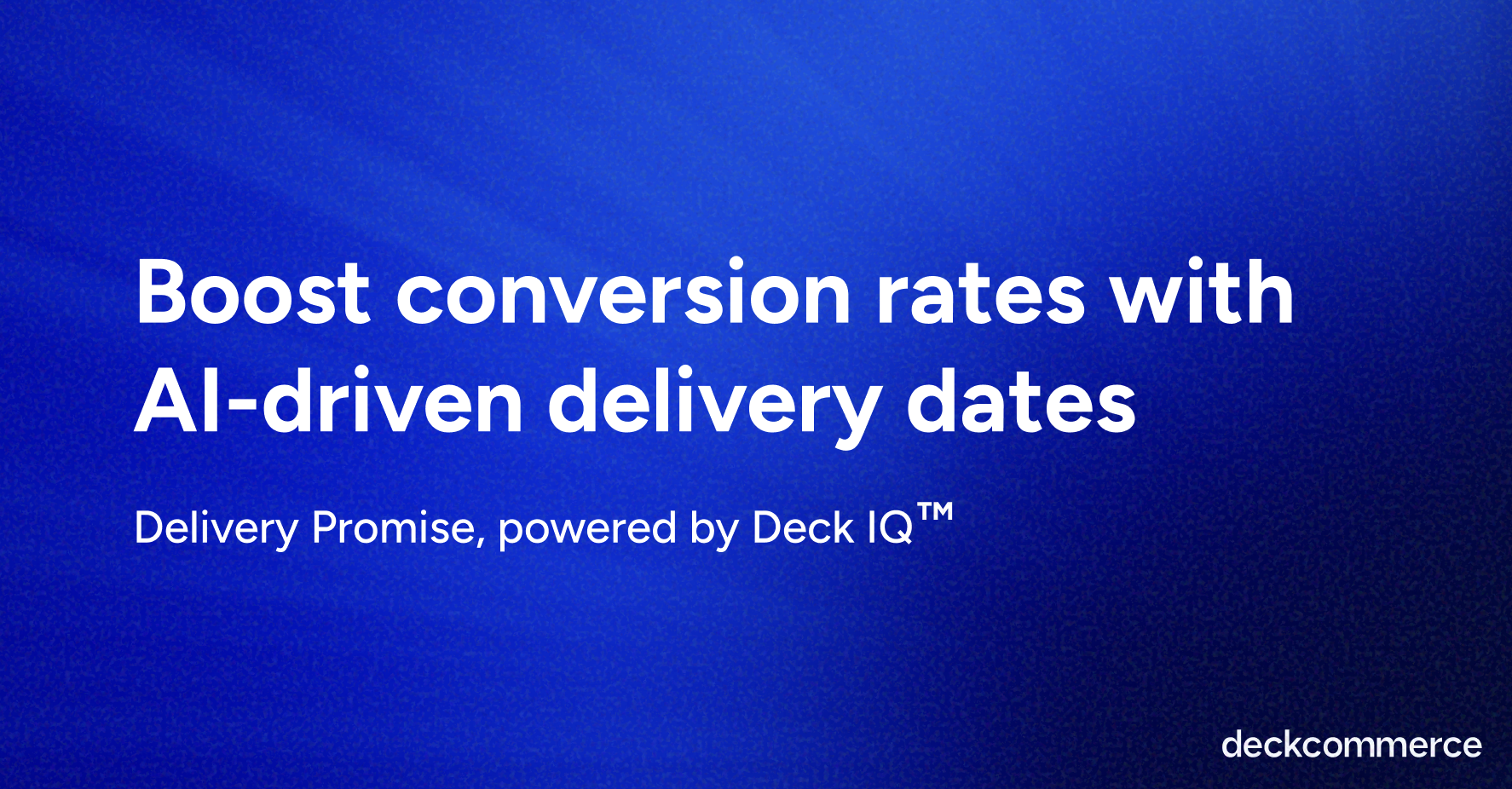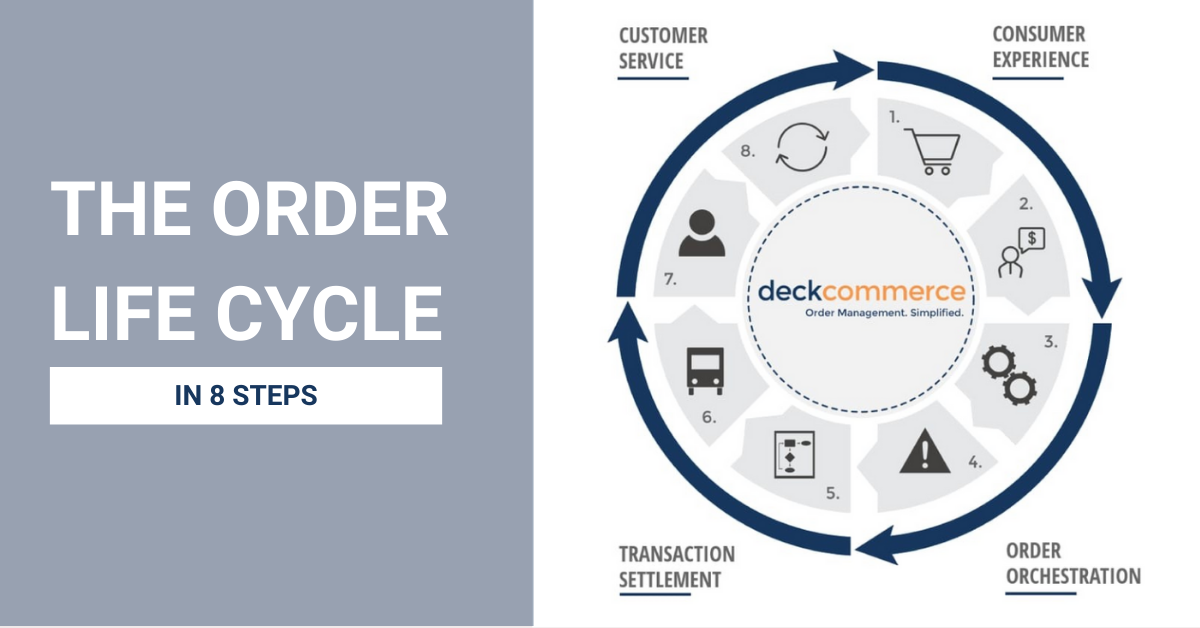
In the quest for an effective order management solution, one of the most common questions retailers ask is “should I use my storefront for order management?”. Their storefront is already in place, so it logically makes sense for them to consider using it to process orders, right? Well, that depends.
In this article, we’ll break down when it may work to use your storefront as your order management system (OMS), how using a storefront as an OMS could actually hurt business, and when retailers should consider leveraging a dedicated OMS.
History of the Storefront
When we think of a storefront in the traditional sense, we think of a customer walking into a shop, purchasing an item, and going on their merry way (remember those days?). This was the standard until the 1990s when ecommerce entered the scene. Amazon launched its online book marketplace in 1995 and as it progressed, it opened up another channel for retailers to get their products in front of their consumers.
As online shopping increased in popularity, more digital commerce platforms began to emerge to provide retailers with a frictionless shopping experience online. The big three included Salesforce Commerce Cloud (2004), Shopify (2006), and Adobe Commerce (formerly Magento) (2008). These platforms provided retailers with the ability to make a beautiful website and online store that allowed customers to purchase their favorite products from the comfort of their homes.
With the launch of social media advertising in 2011, retailers could reach their customers in unprecedented ways. Today, consumers can shop directly within social media platforms to make a purchase from their favorite brands. Essentially a brand’s storefront footprint expanded significantly —giving digital commerce teams the difficult task of meeting consumer expectations in an on-demand world.
The digital storefront—in all its shapes and sizes—has grown to become indispensable. Every retailer selling direct to consumer must have a digital presence in order to survive. This fact became quite clear during the COVID-19 lockdowns. While brick-and-mortar stores shuttered, ecommerce boomed and jumped 32.4% YoY according to eMarketer.
With great power, comes great responsibility.
Modern consumers have a “buy anywhere, return anywhere” mentality. Additionally, they often prefer (and are willing to pay) for a personalized buying experience with relevant product recommendations based on purchase history. They also expect fast-and-free shipping. Now, they may even expect multiple payment options, or the ability to postpone a payment if needed. Simply put, customer expectations are higher than ever—which gives retailers a lofty task to keep up with the “Amazon buying mentality” of convenient, fast, and free.
"Customer expectations are higher than ever."
Retailers need to focus on creating a seamless path to purchase to increase sales and delight customers. And their storefront is an extremely powerful tool that can help them achieve those coveted conversions. After all, that’s what storefronts were created to do.
But what happens after the order has been placed? Can a storefront handle the complexities that come with order management?
Why Order Management is Critical for Retailers
Order management is the facilitation of all retail order data and processes—from storefront to front door. Therefore, an order management system (OMS) should automate the receiving, routing, fulfilling, tracking, notifying, and potentially returning/exchanging of orders.
An OMS is essentially the “brain” behind your sales processes—coordinating the functions of your customer-facing channels like your storefront with your back-end systems like an ERP.
Because order management involves how customers purchase and receive your products— it is a key driver behind your brand experience. And given that almost half of consumers won’t buy from a brand again if they have a poor experience—order management is vital to customer acquisition and retention.
.png?width=663&name=Blog%20Body%20Image%20(1).png)
When to use your storefront as your OMS
Some storefronts offer “lite” order management capabilities. This can work well for small-volume retailers with conservative growth plans, or for those who have a fairly low-complexity operation (i.e. one distribution center, small number of SKUs, siloed channels, etc.). Using a storefront can initially be cheaper for these retailers as vendors tend to bundle their order management tools or add-ons with their storefront contracts.
The question becomes does the storefront’s capabilities for order management set retailers up for success in the long run. As retail brands grows, systems should grow too. Your internal IT team shouldn’t have to build custom code to get your systems to work the way you envision them.
Not sure how complex your operation is? Take this Free quiz to find out.
Challenges of Using a Storefront as an OMS
Limited Functionality (Especially for Omnichannel)
While storefronts create frictionless purchase experiences, they don’t have the capabilities needed to set retailers apart and fuel customer acquisition efforts like a dedicated order management system.
In today’s market, operating with limited omnichannel functionality can severely inhibit the number of opportunities retailers have to create personalized experiences that are unique to their brand.
With a dedicated OMS, retailers can offer additional purchase options such as buy online pick up in store (BOPIS) options or highlight how many items are currently in stock at their nearest brick-and-mortar location. Additionally, a dedicated OMS can offer preorder functionality—or keep customers up to date on their backordered items (while also suggesting recommended in-stock products).
Unnecessary Redundancies
With a storefront, updating inventory numbers, discounts, or promotions needs to be manually entered into each sales channel—storefront, marketplaces, app, POS, etc. By spending time on manually updating each channel, marketing and sales teams spend less time focused on their customers.
With an order management system, these adjustments can be made on the backend once and then have the changes filter through every other selling channel.
Lack of Focused Objective
Generally speaking, conversion teams and processing/customer services team have very different end goals. The conversion team is laser-focused on removing any friction from the path to purchase—whether it’s a custom website or app, promotions and discounts, customer segmentation, or product recommendations. That’s where a storefront provides immense value. But should the conversion team divide its attention and worry about order processing as well as trying to increase conversions? Probably not.
"Conversion teams and processing/customer services team have very different end goals."
And the reverse is also true. Should processing and customer service teams focus on improving marketing and merchandising initiatives?
The fact is that your storefront’s core value is to increase conversions while the core values of an order management system is processing orders and customer service.
Storefronts Built for Different Intentions
While it may seem like a convenient option to let your storefront also manage orders, in reality, it could severely limit your ability to serve your customers well. As listed above, order management systems and storefronts have very different functions and intended value. A storefront’s intent is to increase conversions while the intent of an order management system is processing and servicing orders. Leveraging any system for use cases outside of its core functionality can dilute its value and risk the quality of a brand’s customer experience.
Order management is complex and is always changing to meet consumer demands. Retailers need a system that is purposely built to handle these complexities to keep brands competitive. Think of it like this: You wouldn’t expect your tax vendor to also moonlight as a CRM. You need your tax vendor to be focused on all the legal nuances that come with taxes because if they miss something you could get in real trouble.
The same is true with an OMS. Due to the complex nature of order management (and the high risk that comes with it if retailers get it wrong—i.e. losing customers), you need a system that is solely focused on order management and built by experts focused on the OM domain.
Difficulty to Scale & Grow
A storefront’s order management functionality is more focused on single-channel operations, but retailers with more complex operations quickly outgrow their storefront’s OMS and need advanced OMS capabilities.
Retailers with omnichannel and multi-warehouse operations need functionality that sets their business up for growth such as:
- Advanced routing logic with intelligent rules-based decisioning to determine the most efficient way to get products to customers (DOM)
- Advanced transaction processing including the option to capture payment in a variety of ways (either pre- or post-shipping, or from the sales channel)
- Seamless integrations with complex downstream technologies like ERPs and WMSs
- Ability to add (or replace) other tools within their technology stack (i.e. switch tax or fraud vendors, implement a new loyalty program, or update an order automation based on product type)
While a storefront’s order management capabilities may seem like enough, in reality, if retailers don’t have a tool that offers the advanced features listed above, it could impact their ability to scale their operations.
Switching storefronts
Sometimes change is necessary. While most enterprise brands leverage a cloud-based storefront some still use legacy systems they've "modified" to work for their current needs. However, there will come a day when these brands need to make an upgrade—and if they've tied order management capabilities to their storefront, switching can be a massive headache.
Or maybe a brand leverages a storefront that is too much for them (i.e. Salesforce Commerce Cloud) or needs to cut costs and wants to make the switch to a more flexible platform like Shopify or BigCommerce. With a dedicated order management system, brands can easily swap storefronts when they need it and not risk upsetting any of their backend processes.
Read More--> See how Saje Natural Wellness seamlessly switched from SFCC to Shopify
The "Tack-On" Mentality
In the last five years, many storefront vendors have launched their own order management systems as expansion to their flagship products.
Yet what vendors often find is that order management is more complex than what meets the eye—and without a dedicated team focused on research and development, it can be incredibly difficult to maintain a competitive product. Hence why many of these vendors decide to sunset their order management applications (i.e. Commerce Cloud OM, Magento Order Management (MOM), etc.).
Another consideration for retailers is how long has their provider played specifically in the order management space to indicate how successful they are / will be at giving their brand a competitive advantage in the market. In other words, if it's one of many things they offer, will it get the focus an attention it needs to stay up to date in the ever-changing world of commerce? Having out dated order management technology can make or break a brand's competitive advantage in the market.
Alternative Options for Order Management
At the end of the day, high-volume retailers need an order management system to manage complex and unique experiences that enhance the customer experience. It’s important to verify what functions are essential to their day-to-day business today and what features are needed for success in the future. If you aren’t sure if your storefront fits the bill, there are a few other alternatives for order management.
- Leverage your ERP system (read more)
- Build your own in-house order management system (just beware the Franken-system)
- Use a dedicated order management system like Deck Commerce
Summary
Ecommerce storefronts have done tremendous things for supporting the growth of retailers over the past 30 years—specifically by focusing on increasing conversions and minimizing friction in the path to purchase. But when it comes to order management, leveraging a purpose-built system helps retailers create that end-to-end seamless customer experience.

.png?width=1200&name=LinkedIn%20Image%20%26%20Social%20Preview%20Template%201200%20x%20628%20px%20(13).png)





.png?width=2000&height=2000&name=Blog%20Directory%20CTA%202000x2000%20px%20(2).png)






.png?width=2000&height=2000&name=Blog%20Directory%20CTA%202000x2000%20px%20(3).png)
